- Did you know that 94% of first impressions about a website are design-related? In today’s fast-paced digital world, exceptional media site design isn’t just a nice-to-have—it’s essential to connect and engage with your local audience.
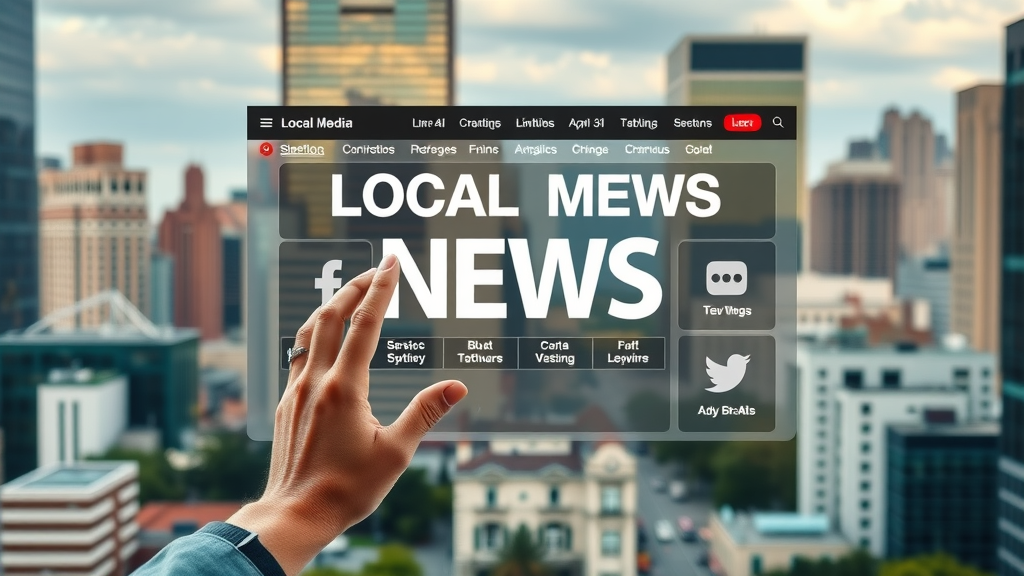
Unlocking Local Engagement: Why Media Site Design Tips Matter for Your Audience
- Learn why implementing targeted media site design tips is crucial for local connection and build the foundation for capturing loyal audiences using proven design best practices.
- What You’ll Gain:
- • Practical media site design tips for immediate impact
- • Research-backed web design and website design techniques
- • Step-by-step site design insights for professionals and beginners
- • Actionable guides on local engagement and responsiveness
Every thriving local media website is built on a foundation of thoughtful design. But what sets the most effective sites apart is their ability to captivate a local audience with strategic media site design tips that prioritize regional personality. By applying research-driven web design best practices, your site can quickly establish trust and loyalty. These aren’t just theoretical concepts—they’re proven, actionable strategies you can implement right away. Imagine transforming your site so that visitors instantly recognize it as a hub for their community, guiding them seamlessly to the stories and features they care about most. Throughout this article, you’ll find step-by-step advice suitable for both new designers and web veterans, with a special focus on making your media platform both memorable and responsive, ensuring users return again and again.
Successful local engagement begins with the awareness that design matters. Strong visual elements, intuitive interfaces, and regionally relevant content combined can elevate your website design—impacting everything from user retention to search ranking. This section will show you just how essential these media site design tips are and prime you to apply them for your organization’s benefit.
Essentials of Stunning Media Site Design: Key Strategies & Best Practices
Understanding Visual Hierarchy in Media Site Design
- Explore how visual hierarchy can direct attention, reinforce your message, and highlight your calls to action in media site design tips.

Visual hierarchy is the silent engine behind good web design—shaping how site visitors interact with each page. When designing a media site, establishing a clear hierarchy means using size, color, contrast, and placement to naturally guide attention toward your most important elements—such as headlines, feature stories, or local alerts. For instance, your calls to action should stand out, landing front and center when necessary. Pro tip: larger and bolder fonts for headings and distinct background color blocks can draw attention without overwhelming users, ensuring that they quickly find what matters most.
Organized visual hierarchy helps reinforce your message and brand identity. By placing important elements like the search bar, newsletter signup, or interactive features strategically, you can encourage users to dive deeper into your content. It’s not just about aesthetics; it’s about fostering intuitive navigation and a seamless user experience. Rely on consistent use of color scheme and whitespace to distinguish different page elements and keep the interface uncluttered. Remember, effective site design leverages visual hierarchy to promote local content, highlight events, and support community engagement.
The Role of White Space in Effective Web Design
- Uncover design best practices on using white space to improve readability and create good web structure.
Too much clutter can confuse and frustrate visitors—especially those on mobile devices. This is where the strategic use of white space (sometimes called negative space) becomes invaluable. White space isn’t wasted real estate; it functions as a visual pause, giving each page element room to breathe and allowing users to focus on one item at a time. Good web design requires balancing content density and white space for optimized readability, helping key design tips and calls to action stand out clearly.
The most engaging media sites make white space part of their signature style, applying it around photos, between articles, or along margins for enhanced structure. Not only does this increase page comfort—it improves scan-ability , so users can quickly find links, maps, or community highlights. White space also assists with adaptive layouts, ensuring that your responsive website design adapts fluidly across devices. Incorporating generous padding and margin settings is a pro tip that elevates both the visual hierarchy and the user experience for all audiences.
Mastering the Color Scheme for Local Impact
- Examine how color scheme choices influence emotion and perception in site design for your media-focused website.

Choosing the right color scheme for your local media site is a critical design tip that bridges your brand’s identity and your audience’s culture. Colors evoke specific emotions—warm tones convey friendliness and urgency, while cool hues suggest calmness and credibility. For local impact, consider incorporating shades inspired by regional landmarks, festivals, or sports teams. This not only creates visual cohesion but also fosters an instant connection with your audience.
The best web designers use contrast to highlight important sections—actions, breaking news banners, or navigation bars. A well-crafted color scheme also supports web accessibility, ensuring text is readable against all backgrounds for diverse community members. A helpful pro tip: leverage tools like Adobe Color to find combinations that are visually harmonious and ADA-compliant. Ultimately, a local-centric palette boosts recall, strengthens brand recognition, and signals authenticity to every site visitor.
“Design is not just what it looks like and feels like. Design is how it works.” – Steve Jobs
Media Site Layout: Balancing Functionality and Local Personality
Essential Navigation Features: Search Bar and Accessibility
- Best practices for placing a search bar and ensuring intuitive navigation in every aspect of website design.
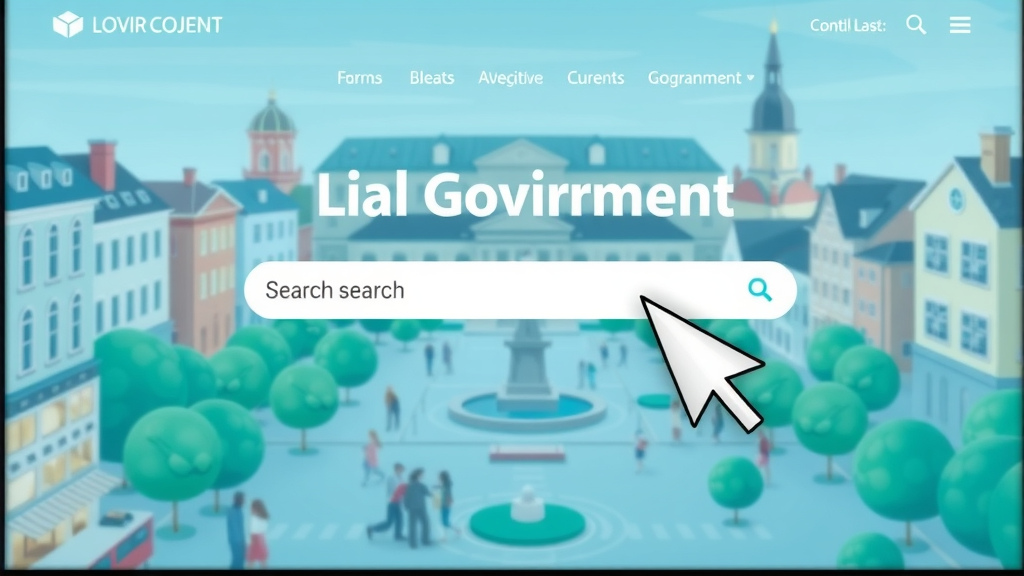
The cornerstone of adaptable site design is a navigation structure that’s easy to find and use. Placing the search bar in a visible location—typically in the top right or center of the header—enables visitors to quickly find news stories, events, or community resources. Every interactive element, from dropdown menus to clickable icons, should reinforce a seamless browsing journey. Accessibility should be a top priority: use legible fonts, adequate color contrast, and ARIA labels for screen readers to cater to all users.
Accessibility isn’t just a moral obligation; it’s also key to your site’s success in search engine rankings. Incorporate alt text for all significant images and ensure that your calls to action, navigation, and primary page elements are keyboard navigable. Structuring the content with h1, h2, and h3 tags aids both SEO and user comprehension, making each landing page more robust and discoverable for your diverse audience.
Integrating Social Media Seamlessly
- Tips for embedding social media and making your content easily shareable through smart design tip strategies.
Embedding social media icons and feeds directly within your media site design can exponentially boost your content’s reach and resonance. Choose a layout that positions popular platforms like Facebook, Twitter, and Instagram near news sections or in a sticky sidebar where site visitors can always interact or share content. Pro tip: opt for icons that match your site’s color scheme and use tooltips for clarity, making these interactive elements functional as well as visually appealing.
Encourage user-generated content and community stories by integrating sharing buttons at the end of articles or event listings. Social integrations not only foster a sense of inclusion but can drive up website referrals and local engagement. Pay extra attention to ensuring share buttons are mobile-friendly and performance optimized—slow, bulky widgets can turn away users before they even interact.
Optimizing Calls to Action for Community Engagement
- Actionable guidance on designing compelling calls to action that resonate with a local audience
To transform passive lurkers into active participants, your site must feature compelling calls to action (CTAs) . Whether it’s a newsletter signup, volunteer opportunity, or poll, keep CTAs clear, concise, and above the fold. A strong CTA uses actionable verbs, distinctive color contrast, and clear value propositions like “Join Your Neighborhood Watch” or “Get Local News Alerts Now.” Our advice: always test the performance of your CTAs via A/B user tests and analytics tools to ensure they resonate.
It’s effective to rotate or prioritize CTAs during key community initiatives or events, aligning the tone, style, and placement with user feedback and evolving goals. Monitor click-through and engagement rates, and don’t be afraid to adjust based on real-world interaction data—an agile approach in site design is crucial for maximizing ongoing engagement with your local community.
| Element | Localized Content | Color Scheme | Navigation Structure | Community Features |
|---|---|---|---|---|
| Local Site | Neighborhood news, events, stories | Colors inspired by local landmarks & schools | Simple, search bar front and center, easy to find | Forums, calendars, local directories |
| Generic Site | Templated global content | Neutral or corporate palette | Dropdown-heavy, less visible search | Minimal or no local engagement features |
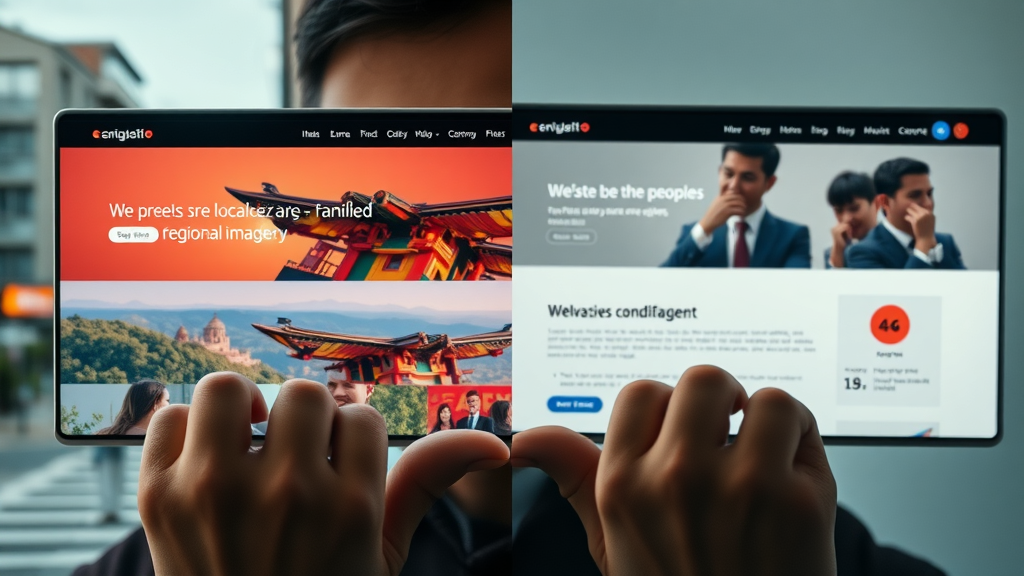
Responsive Media Site Design Tips: Make Your Content Shine on Any Device
Why Mobile-First Web Design is Crucial for Local Audiences
- Explore design best practices for mobile-responsive media sites and how to implement adaptive layouts.

With the majority of local audiences consuming news on mobile devices, mobile-first web design is no longer optional—it’s a necessity. Structural elements like the search bar, navigation, and key calls to action must remain accessible and touch-friendly. A responsive site uses flexible grids and breakpoints, ensuring that content adapts smoothly to every screen size. Pro tip: test your layouts on real devices and emulate slow connections to ensure the fastest, most accessible experience possible.
Adaptive images, scalable fonts, and intuitive page elements should be prioritized in your design process. Not only does this satisfy user experience demands, it also improves search engine rankings, since Google prioritizes mobile-optimized websites. Employ media queries, touch-friendly buttons, and readable text sizes for optimal results. Remember, seamless mobile performance isn’t just about appearance—it’s about function and accessibility in every aspect of your website design.
Optimizing Media Elements: Images, Videos, and Loading Speed
- Site design strategies for using img, h1, h2, h3, and h4 tags to enhance SEO and user experience while maintaining fast loading times.
- Key Responsive Design Tip Checklist:
- • Flexible grids and breakpoints
- • Adaptive images and media queries
- • Touch-friendly buttons
- • Readable text sizes

Media-rich sites can quickly become bogged down if images and videos are not properly optimized. Use h1, h2, and h3 tags for content structure—making it easier for search engines and users to scan your site, improving both SEO and readability. Pro tip: always compress images, use modern formats (like WebP), and implement lazy loading for non-critical media above the fold. For videos, consider embedding lightweight players and providing alternative text or transcripts for accessibility.
Enhance every media site design tip by regularly testing loading speed and responsiveness using platforms like Google Lighthouse or GTmetrix. Fast loading times reduce bounce rates and boost user retention, especially on mobile device connections. Regularly audit site performance, fix broken links, and streamline code to ensure that every interactive element delivers a frictionless experience.
Content that Connects: Using Media Site Design Tips to Build Local Trust
Personalization and Localized Content Strategies
- Best website design practices for reflecting community values and preferences through tailored content.

To truly resonate, your media site must mirror the values, events, and conversations unique to your local audience. Leverage personalization and localized content strategies by highlighting community voices and regional news. Use geo-targeting to dynamically promote events or business sponsors based on a visitor’s location. Reflect current events, festivals, or weather conditions—this cements your website as the local go-to resource.
Tailor feature stories, spotlight local small business owners, and curate event calendars relevant to the community. User-generated content and forums empower site visitors to contribute directly, nurturing loyalty and increasing repeat visits. A site design that values local opinion goes a long way in building a trusted neighborhood brand.
Building Authority with Testimonials and User Stories
- Leverage quotes, testimonials, and community-driven features to improve engagement and site design credibility.
Social proof is a powerful motivator. Displaying genuine testimonials, quotes, and user stories builds credibility and demonstrates the positive impact of your platform. Highlighting contributions from active users or respected local organizations encourages new visitors to trust your content and participate. For extra effect, combine positive reviews with relevant user photos and local scenery for authenticity.
Consider rotating testimonial sections or placing endorsements strategically near calls to action and landing pages. Incorporating user feedback and building community-driven features (forums, local listings, events) help create an ecosystem where your media site becomes the hub of local conversation. Remember, a story from a neighbor is more persuasive than a banner ad—let your audience be your brand ambassadors.
SEO Optimization in Media Site Design Tips
- How to use good web and site design principles in conjunction with SEO for better local search rankings.
- Local Engagement Features:
- • Event calendars
- • Local directory links
- • Community forums
- • Maps and contact details
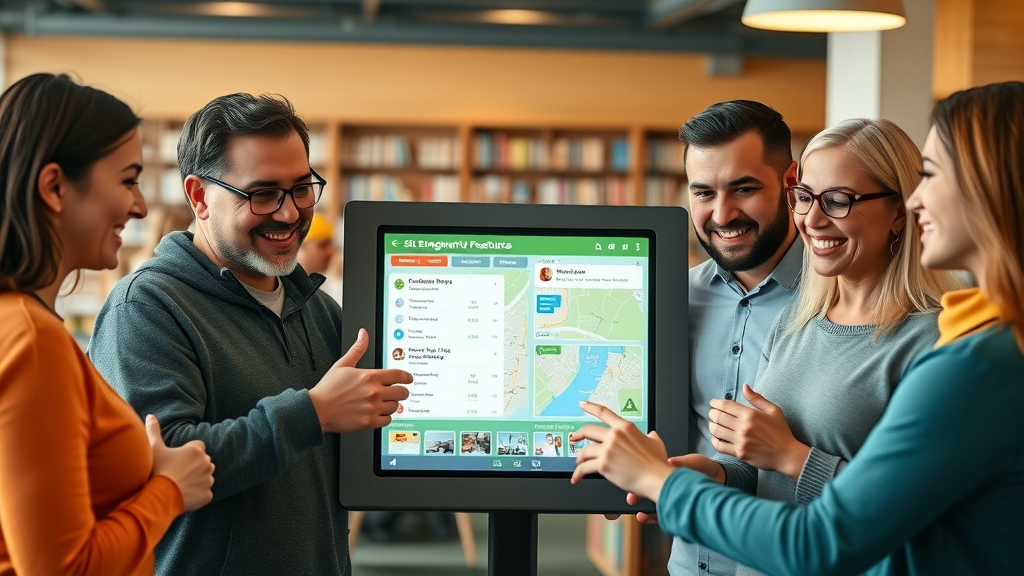
Combining design best practices with strong SEO principles is essential for building your audience. Use sitemaps, keyword-focused metadata, and proper heading structure throughout your website design to increase visibility in search engines. Include alt text for all images—especially those showcasing important elements like community features or event banners—to boost SEO while ensuring accessibility.
Regional keywords and structured data help your media site appear in local search results for people seeking small business directories, municipal updates, or event guides. Internal linking, a strong navigation structure, and regularly updating local engagement features such as calendars, directories, and forums will establish your site as an authoritative voice—making your portal an essential community destination.
Proven Media Site Design Tips from Successful Web Design Experts
- • Always prioritize clarity over creativity in web design.
- • Test your calls to action with A/B experiments regularly.
- • Local photography enhances authenticity in website design.
- • Keep navigation simple and visible at all times.
- • Ask for community feedback to refine design best practices.
“Good web design is obvious. Great web design is transparent.” – Joe Sparano

The most trusted web design experts agree: clarity always trumps complexity. When you keep your navigation, color scheme, and layout clean, users are empowered to browse comfortably and efficiently. A/B testing is your ally in determining what really works—swap out calls to action, move your search bar, or tweak white space to observe real user response. Local photography and visuals embed your media site in the fabric of the community, helping users connect emotionally with your content.
Above all, maintain an ongoing feedback loop. Gather visitor insights through Hotjar, web analytics, and user comment forms to continually refine your design. Even minor tweaks, like adjusting a color scheme’s vibrancy or making a page element more prominent, can dramatically improve user engagement and satisfaction.
Step-by-Step: Implementing Media Site Design Tips for Your Local Audience
Identify Local User Personas
- Learn how to research and map your local audience to inform media site design decisions.
Truly effective media site design starts with understanding your audience. Create detailed local user personas by gathering data through user surveys, social media insights, and community interviews. Identify patterns—such as age range, tech habits, or favored content categories—to anchor your design decisions. Ask questions about what matters most: breaking news, events, business listings, or opinion columns.
This research will sharpen your awareness of what features to emphasize, such as a highly visible search bar, customizable local news sections, or direct community input forms. Mapping personas allows you to personalize each page element, ensuring your site feels welcoming and relevant to every visitor.
Wireframe and Prototype: Start with Structure
- Streamline your site design process by sketching wireframes that integrate critical design tips and design best practices.
Build out the foundation for a successful site by sketching wireframes and prototypes . Start with low-fidelity wireframes that map the main navigation, content blocks, and key page elements. At this stage, focus on implementing the most valuable media site design tips—such as prioritizing the search bar, white space, and calls to action. Use collaborative tools like Figma to get team feedback and iterate on your design framework.
Next, develop interactive prototypes to simulate the user journey. Incorporate consistent color schemes and responsive grids, and conduct user tests to expose friction points early. This iterative process saves time and resources while ensuring you deliver a polished, intuitive layout that’s grounded in both best practices and user preference.
Iterative Testing and User Feedback
- Apply best practices for collecting and acting on user feedback to refine your web design.
Refine your site with ongoing feedback and adjustments. Launch user tests with local site visitors to observe behaviors and reactions to different design tip implementations. Gather both quantitative data (from Google Analytics and Hotjar) and qualitative input via surveys or interviews. Pro tip: run A/B tests on your site’s landing page to see which calls to action or navigation structures yield the best results.
Student-led focus groups or feedback from small business owners can offer fresh insights into how your community engages with your website design. Prioritize updates that enhance clarity, speed, and access to key local content—and maintain a regular cycle of user feedback for ongoing improvement.
| Task | Tools | Outcome |
|---|---|---|
| Audience Research | Google Analytics, Surveys | Personas with defined needs |
| Wireframing | Figma, paper sketches | Clear design plan |
| Prototype Testing | Hotjar, Analytics | Validated design improvements |
| Launch & Refine | User tests, Feedback forms | Ongoing design optimization |
Video Guide: Top Media Site Design Tips in Action
- Watch a walkthrough of effective web design, website design, and site design techniques used by leading local news and media outlets.
Video Tutorial: How to Use Media Site Design Tips for Maximum Engagement
- Step-by-step video breakdown of implementing color scheme, calls to action, and personalization with media site design tips.
Frequently Asked Questions: Media Site Design Tips
What are the 4 principles of media design?
- Answer: The 4 principles of media design are contrast, repetition, alignment, and proximity . These guide the visual hierarchy, ensure consistency, and foster intuitive navigation in media site design tips.
What are the 4 C's of website design?
- Answer: The 4 C's include Clarity, Consistency, Content, and Creativity . Leveraging these principles will support your strategy for impactful media site design.
What are the 5 golden rules of web design?
- Answer: The 5 golden rules are: Keep it simple, Make navigation intuitive, Use a consistent design tip, Ensure mobile responsiveness, and Optimize loading speed .
What are the 7 major steps to designing a webpage?
- Answer: The 7 steps are: Define the purpose, Research users, Plan the site structure, Design wireframes, Develop and populate content, Test usability, and Launch the website design .
Seven Indispensable Media Site Design Tips for Local Success
- • Prioritize user-first site design layout
- • Use a color scheme that reflects your locale
- • Make the search bar easy to locate
- • Embed community-oriented content
- • Keep calls to action above the fold
- • Maintain a balance of white space and content
- • Test all design tips before full-scale implementation
| Element | Design Tip | Local Example |
|---|---|---|
| Navigation | Keep visible, make search easy to find | Sticky search bar with city landmarks |
| Content | Highlight local stories/events | Live calendar of city events |
| CTAs | Above the fold, aligned with region | “Sign Up for Local Alerts” banner |
| Images | Use locally sourced photos | Community member spotlights on home page |
“If users can’t find it, it doesn’t exist. Good site design brings your message to your community.”
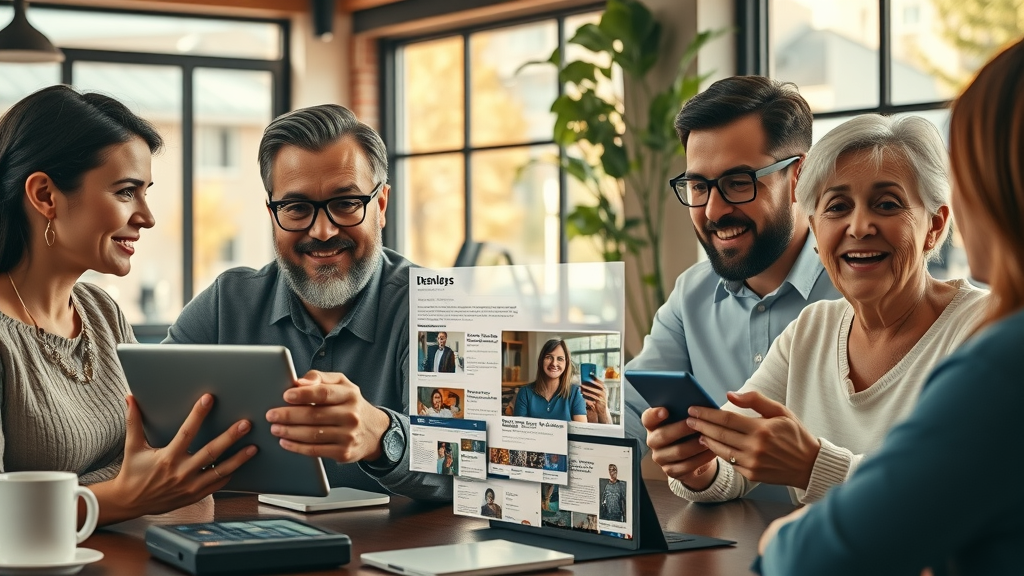
Four Game-Changing Tools for Implementing Media Site Design Tips
- • Figma for wireframing and prototyping media sites
- • Google Analytics for user behavior insights
- • Adobe Color for generating appropriate color scheme palettes
- • Hotjar for heatmap and user testing in site design
Video Demo: How to Test Media Site Design Tips for Maximum Engagement
- Live demonstration of A/B testing and optimization for calls to action, navigation, and white space.

Media Site Design Tips Case Study: Local News Portal Makeover
- A real-world example showcasing transformations in design tip adoption, improved visual hierarchy, and consistent user growth.
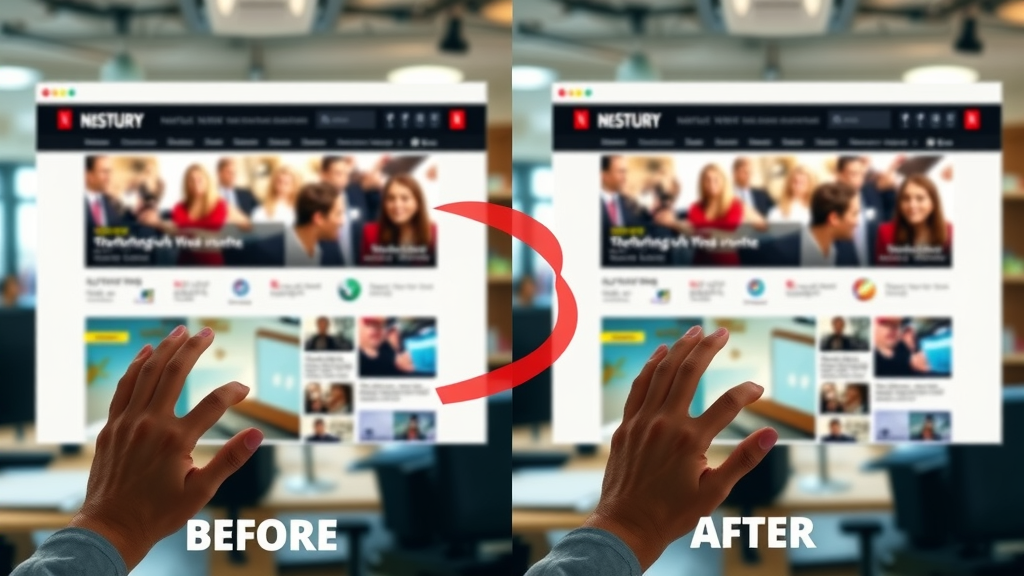
After implementing these media site design tips, a prominent local news portal saw measurable improvements. Enhanced visual hierarchy directed more users to their event calendar and breaking news, while accessible navigation and locally inspired color schemes saw reader loyalty soar. Their A/B testing of calls to action doubled newsletter signups, and ongoing community feedback ensured the team refined each feature for higher engagement. The transformation resulted in consistent growth in site visitors and strengthened community ties.
This case study proves that investing in site design using targeted tips—especially those focused on local identity, responsive layouts, and authority-building features—pays dividends for any media outlet aiming to cement its place in the neighborhood.
Key Takeaways for Effective Media Site Design Tips
- • Emphasize local identity using tailored design best practices
- • Use iterative testing to refine media site design tips
- • Integrate feedback from your audience and industry leaders
- • Always adopt a responsive approach to site design
Your Next Steps: Transform Your Media Site with Proven Design Tips
- Need help crafting a captivating local media experience? Implement these top media site design tips and see measurable engagement boosts today. Consider booking a local design consultation or exploring our e-guide for deeper insights.
Ready to put these media site design tips into practice? Get started today and empower your local website to shine as the hub of your community!
 Add Row
Add Row  Add
Add 




Write A Comment